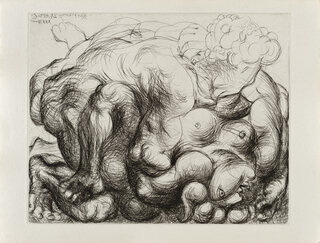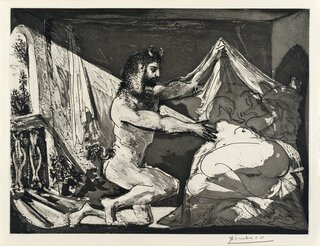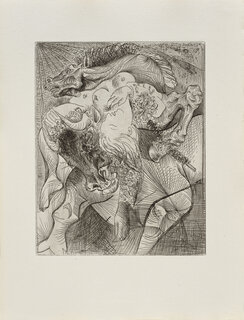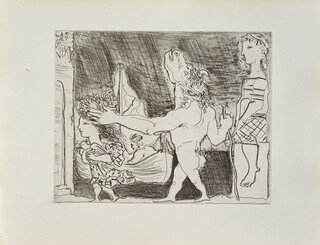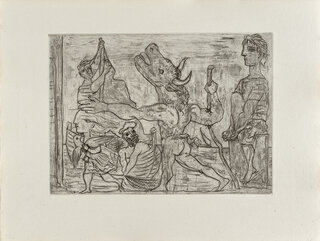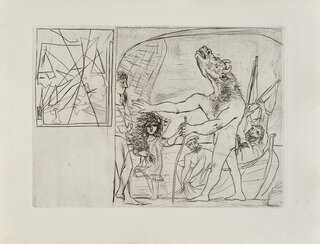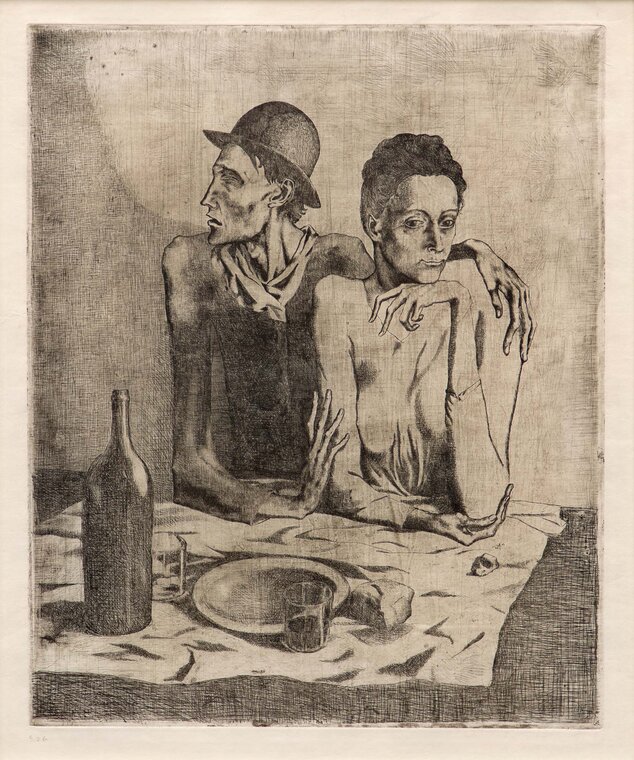
Le Repas frugal is Pablo Picasso’s only second print, created in Sep. 1904 when the artist was only 23 years old and had had no formal training in printmaking, yet it has become an iconic work and is the only print linked to the artist’s Blue Period, recognisable by the pervasive melancholy and poverty that the image depicts.
The emaciated state of the couple can been seen in their elongated hands and chiselled features. The woman in the print is a portrait of the enigmatic Madeleine, Picasso’s lover at the time. All we know is that she was a model … she was pretty in a delicate, bird-like way (her nose and forehead formed a straight line).
Madeleine’s thick hair, loosely drawn back into a chignon, and her boyishly lean body recurs in a number of works done over the next six to nine months – works that mirror the blurring of the Blue into the Rose period. Madeleine is most probably also the figure of the Femme au casque de cheveux of 1904 at Art Institute of Chicago as well as that of the superb Femme a la chemise of 1905 at Tate Modern. The man seated next to her is a figure from the artist’s past in Barcelona which he had finally left only a few months earlier. The figure first appears in several sketches and a gouache from 1903 and then in the large painting Le repas de l’aveugle at the Metropolitan Museum of Art also of 1903.
This quintessential and final Blue Period icon links his Spanish past with his French future as remarked by John Richardson, Picasso’s biographer (John Richardson ‘A life of Picasso’, vol. I, p. 300 London, 1991).
Picasso made Le repas frugal after definitely moving to Paris, at a time when his financial situation was troubling. Probably encouraged by his friends and fellow Spaniards Ricardo Canals and Joan González, he turned to printmaking as a source of income and used a large zinc plate that had previously been worked on by González since he could not afford the more expensive copper plate that would normally be used. One sees ghostly traces of a landscape left by González in the upper half of the work, adding an ethereal layer to the composition. With only rudimentary guidance from Canals, he took the challenge of creating this large-scale etching. The work was eventually exhibited for the first time in early 1905 at Galerie Serrusier in Paris. Picasso was clearly proud of his print; he sent two impressions to his friend Sebastiá Junyent in Barcelona, one to be passed on to Picasso’s father, the other to show to prospective purchasers.

